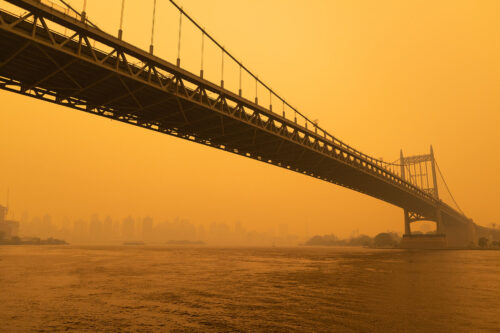
Spreading Smoke, Rising Risks
Worsening wildfires are bringing ocher skies and dangerous pollution to previously unaffected regions around the world. We talk with RMIers about how wildfires and air pollution have touched their lives and drive their work.
US residents on the East Coast and Midwest were never fully insulated from the effects of an overheating planet (as July’s record high temperatures show all too clearly) but to many in the vast region, wildfires — and the smoke-filled air they bring — have long been a problem for somewhere else.
But this summer’s wildfires in Canada, and the plumes of air pollution they sent to more than a third of the United States, as well as the current wildfires in Southern Europe and North Africa, brought home the truth that there is no hiding from climate change and its disastrous outcomes. It also woke many up to the preciousness of clean air, something that those around the world living with poor air quality have long known.
Here we talk to RMI staff to find out how poor air quality from wildfires and other events have affected them, and how it has strengthened their resolve to fight climate change.
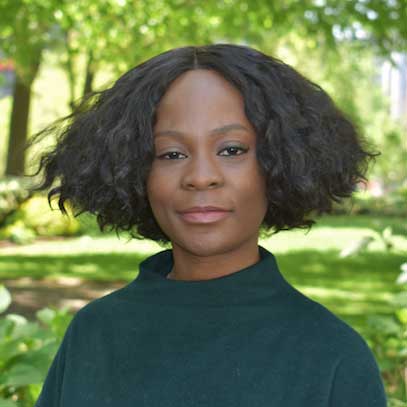
I was reminded of how, if we don’t act now, waking up to hazy skies may become our new reality — not just in NYC but in many parts of the world. Those masks that we’ve happily set aside since the COVID pandemic may be back for good.
Ebun Ayandele, New York City
When the Canadian wildfire smoke hit New York in June of 2023, Ebun Ayandele, an RMI manager working to mitigate methane emissions, saw a tweet that said, “NYC has the worst air quality in the world.” Her immediate reaction was “What a bold-faced exaggeration.” But when she looked out the window the sky was so hazy it looked like it was saturated with fine dust. Freshly returned from a trip to Delhi, she thought to herself, “Delhi, which is ranked as having some of the worst air quality in the world, did not look like this.” It reminded her of the looming dangers of climate change and the importance of the work we do at RMI. “My work to mitigate methane — the second largest contributor to greenhouse gas emissions — in the waste sector is critical to minimizing the regularity of such wildfires,” she says.
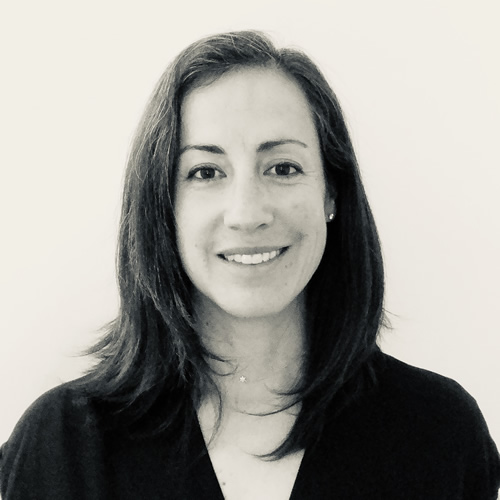
These wildfires make what we’re working on very real and dire. It brings incredible anxiety because of the fear that we may not be able to fix it fast enough. This is just the beginning if we don’t turn things around ASAP.
Martha Campbell, Oakland, California
Martha Campbell, an RMI principal working to decarbonize buildings, was living in Oakland in 2018 when the Paradise Fire occurred. She says she never experienced anything like it in her life, with the smoke persisting for over a month. And after the Lightning Complex fires two years later, the smoke lingered for almost three months and Campbell regularly wore an N95 mask inside her apartment. The Texas native also recently experienced smoke in her childhood home of El Paso from wildfires, drifting over the southern border from northern Mexico. “What is sad is this is happening in the Mexican mountains where the Tarahumara live and much of their food supply is declining because of the ongoing droughts,” she explains. “This is environmental injustice playing out at its very worst.”
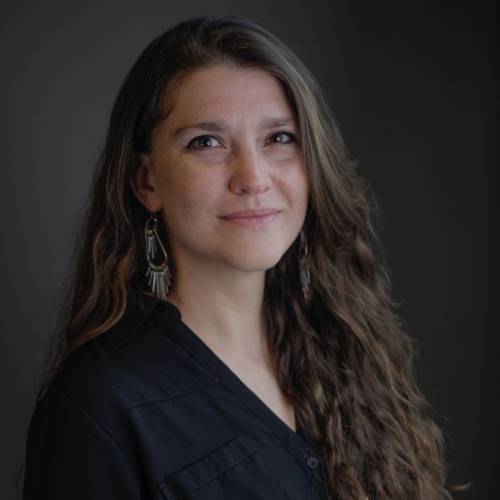
Last summer I arrived in Dresden, Germany, on a brutally hot evening and said, ‘It smells like wildfires.’ ‘Probably someone grilling,’ my partner said. ‘It’s Germany, not Colorado.’ But in fact, when I checked the news, it was smoke from fires burning not far away. It hit home for me that just as wildfires no longer have a season, they no longer have a region either.
Denali Hussin, Boulder, Colorado
The first time Denali Hussin, a strategic communications manager for RMI, was evacuated for a fire was during her first job, less than a year into working on climate change. She was hosting a press conference on heat waves, wildfires, and climate change from her office at the US National Center for Atmospheric Research in Boulder when the Flagstaff Fire ignited in the center’s backyard. Now she has air monitors and filters in most rooms of her house. On bad days, despite living right at the edge of the foothills, she can’t see the mountains.
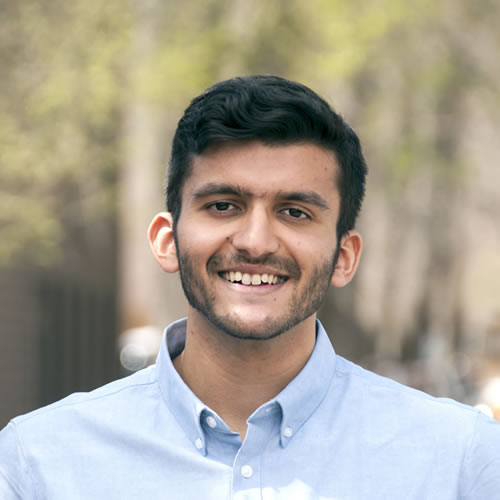
The wildfire smoke in New York reflects a truth about climate change — no one is safe. Not even those living in the richest city in the richest country in the history of the world. Maybe this will catalyze folks into action.
Rachit Kansal, New York City
Stifling air pollution is not new to Rachit Kansal, a manager on the RMI electricity team. Having grown up in Jakarta and having frequently visited Delhi — two of the most polluted cities in the world — he had seen cityscapes through thick haze before. But according to Kansal, this felt different. Maybe it was because New York was bathed in dark orange, lending it an eerie and disturbing feeling. Maybe it was because his eyes watered, his breathing was congested, and he felt the need to wear a mask inside. Or maybe it was because of an implicit bias — he never expected something like this to happen in the Global North. “Poor air quality is a daily fact for billions around the world, but it never receives this kind of attention,” he explains. “This is the irony about climate change. It is both global — and thereby universal — and deeply unequal and unjust.”
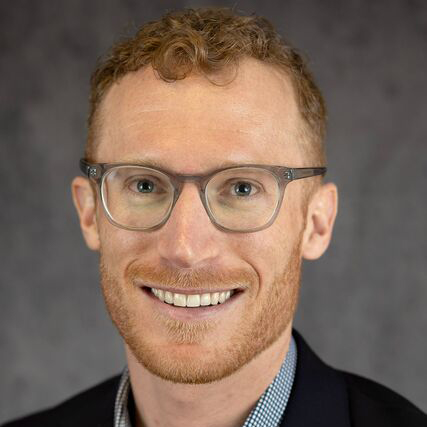
Wildfires in my backyard definitely strengthen my resolve to work on reducing greenhouse gas emissions from human-caused sources as early and fast as possible. Unfortunately, breathing in wildfire smoke on your favorite trail or nearly having your house burned down turns numbers from scientific studies or energy models into palpable and costly realities.
Ryan Laemel, Basalt, Colorado
RMI Principal Ryan Laemel first experienced wildfires in the summer of 2018, one of the most destructive fire seasons in Colorado’s history. The 12,000-acre Lake Christine Fire burned his backyard and nearly his house while he was on a work trip in India. When he returned home, the reality hit home when he tried to mountain bike with an RMI colleague. They left before dawn and eventually saw an ominous orange-red sun rising through a thick, dirty brown sky.
“Having spent the past year working with Indian cities on transportation decarbonization, we immediately recognized the sight,” he says. “With our eyes beginning to sting and fears mounting about breathing fine, harmful particulates deep into our lungs, we quickly rode home, breathing lightly, as Amory often cautions. I didn’t bike or run for the next week or so due to the poor local air quality.”
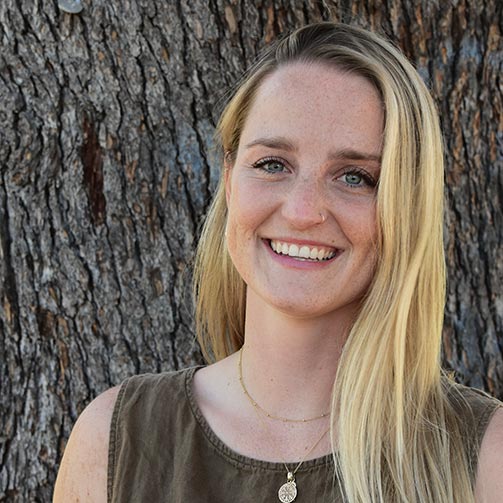
Many people don’t have the privilege of being housed or being able to afford air purifiers. We must fight climate change to protect those most affected and under-resourced. Climate change is the single most important challenge of our generation — and those to come. We must fight for intergenerational justice.
Avery McEvoy, Oakland, California
Avery McEvoy, a senior associate on RMI’s electricity team, was diagnosed with asthma at age 22, brought on by living in Los Angeles’ air pollution during college. In the fall of 2017, during her first week working at RMI, a dry lightning storm hit the Santa Cruz Mountains in central California, starting a fire near her childhood home. That weekend she helped her parents pack up the house they had lived in for 42 years. While their home survived, many neighbors’ houses did not. Her mental health took a hit. “I was unable to go outside for a period of two months during that time due to the wildfire smoke and my asthma,” she explains. “Breathing fresh air and seeing wild places is essential for my well-being, and when it was a health risk to do that, it was difficult. It makes me think about the other cities around the world that experience poor air quality every single day, shortening the lives of their residents.”
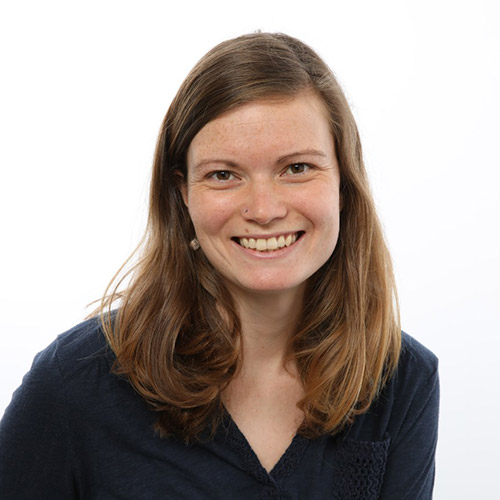
This reinforces my dedication to working on climate change. When you can physically see and feel the effects of climate change, it makes it a lot more real and tangible and reminds us how much work we still have to do. But it also hopefully makes it more real for people, which can help build public support for climate action. Seeing the wake-up call and the urgency people feel around climate when they experience things like this encourages me to stay in this fight.
Hannah Perkins, Chicago, Illinois
Hannah Perkins, a marketing and communications lead, was used to experiencing bad air quality from wildfires when she lived in California. So she was surprised to encounter smoky skies in Chicago, too. On the first day that the Canadian fires affected the air in Chicago, Perkins didn’t realize how bad it was and left her window open. In the middle of a meeting, she started feeling sick. So, she closed all the windows and didn’t go outside for three days. “I’m very fortunate that I work inside and from home — those who have to work outside were more directly exposed. People shouldn’t have to choose between their livelihood and their health,” she says.
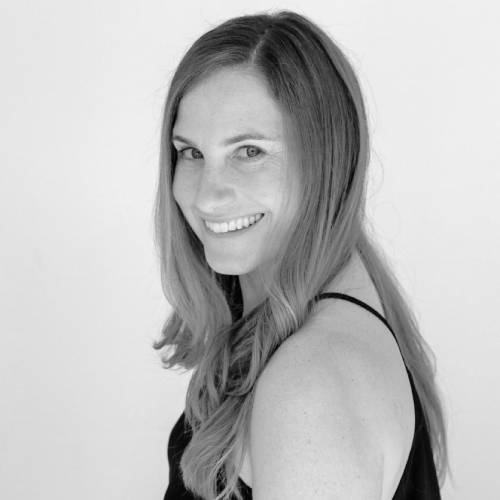
Living through this time is what inspired me to do something about the climate crisis. I felt desperate to use my skills and experience to do what I could to create a sustainable future for young people — and to actually take this crisis seriously.
Rachel Sarah, Oakland, California
Rachel Sarah, RMI’s media relations lead, was born and raised in the San Francisco Bay Area, and recalls 2018, when the worst wildfires in the history of California raged just north of her home. Although she and her children were safe, they experienced smoky days for weeks on end. Most of the schools in the Bay Area shut down due to the horrible air quality. However, Sarah says the most dramatic day was in September 2020, when COVID was in full force, and the wildfires raging in the Sierra Nevada blotted out the sun in the Bay Area. “‘Apocalyptic’ is the word people have used to describe the past few years of wildfires in California,” she says. “You couldn’t see the sun or go outside without a high-quality mask.”
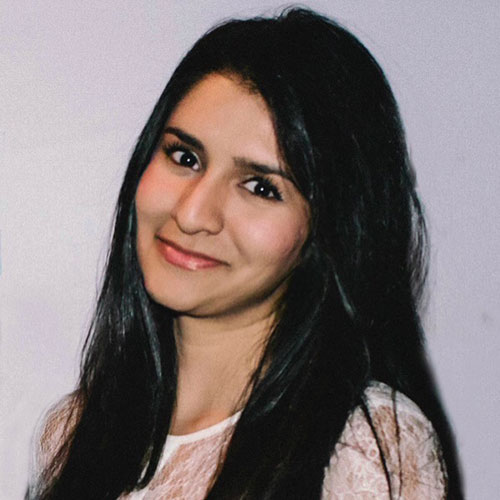
Climate change does not recognize or care about national borders, and no matter how advanced or wealthy or well-resourced a city or country may be, we are not inoculated from the worst impacts of climate change, which continue to hit us year after year.
Hadia Sheerazi, New York City
Hadia Sheerazi, an RMI manager working to decarbonize the chemical sector, could “taste” the air when the smoke from the Canadian wildfires hit New York in June 2023. Sheerazi grew up breathing some of the worst quality air in the world in Pakistan, so she thought she had a pretty high tolerance from her childhood exposure to pollutants. However, she says, “I was quite literally rendered breathless by the record-breaking air pollution in New York City, which topped the charts for worst air quality in the world — beating out the typical top 10 list of the most polluted cities in Pakistan, China, and India.” She explains that the city’s air quality crisis, which spanned much of a week, was particularly hard and debilitating for the elderly, children, and New Yorkers with health conditions such as COPD, asthma, and long-COVID symptoms.
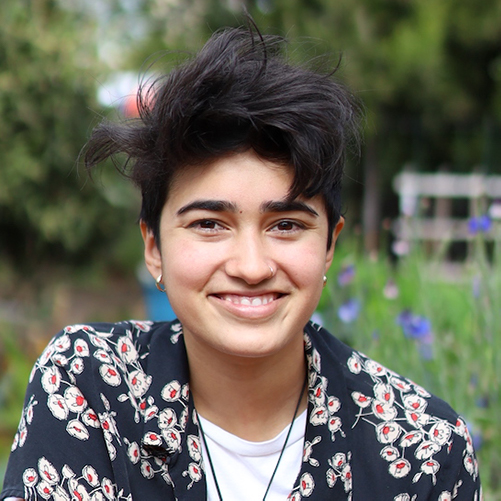
Wildfires have thankfully been my closest and most extreme exposures to climate-related catastrophes in my life so far, and strongly inform my devotion to environmentalism. I hope it has the sobering effect on others like it has had on me.
Satchi Thockchom, Oakland, California
Satchi Thockchom, an intern at RMI this summer, explains that although they grew up with safer air quality than many, they share pangs of climate anxiety common to many Gen Z folks. And wildfires spike their level of dread. For their first two years at the University of California – Berkeley, Thockchom had many school cancellations due to the smoke. But the worst time they remember were the wildfires in the fall of 2020. “The news was lit up with photos of San Francisco, a bastion of ‘the future.’ I found the city so small, humbled in the face of the latest shades of the climate crisis, our true future slipping out of our hands,” they recall. “Even the richest people, places, or companies in the tallest buildings couldn’t escape the sky and smoke.”
Continuing on with Hope
With temperature records being broken daily this summer globally, experiences like those above will be happening to more people, more often, in more places around the planet. To be sure, the worries these extremes cause is spreading too.
Yet as RMI’s staff shows, these extremes also galvanize commitment. With their work, RMI is catalyzing climate progress around the world, from US schools investing in heat pumps to solar-powered minigrids improving lives in Nigeria — globally, the wider transition to renewables is unfolding far faster than predicted.
RMI works on a concept of applied hope, which is seen in our optimism for solutions and our rigor around how to deploy them. Indeed, as RMI Principal Paolo Natali says speaking about the wildfires, hope is a vital element of our success. “The idea of devoting my life to professionally be part of the solution gives me comfort. After all, the only future that there can be, in the long term, is the one we’re striving for.”
To read some good climate news, check out our stories of hope, applied.